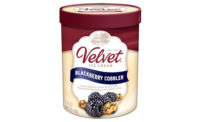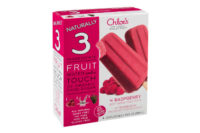Ice Cream Steady, Novelties Brisk
Ice cream may be the most predictable performer in the dairy industry. Each year Americans buy a little more than the year before, and 2-3% growth is just as reliable as January blizzards in Buffalo.
But a spike in ingredient prices in 2001 was passed on to consumers, so dollar sales rose more sharply that year while volume dropped a bit.
A look at recent quarterly sales figures from Information Resources Inc. indicates that things pretty much returned to normal in 2002. Dollar sales were down just a bit in the first quarter of 2003, but that was compared to the abnormally high period the year before. These figures represent food, drug, and mass merchandiser channels, but do not include Wal-Mart.
Recent sales figures for the top 10 brands reveal some interesting information. Ben & Jerry's showed significant growth with dollar sales up 11.9% for the 52 weeks ended May 18. Unit sales were up 11.6% for the same period. Other brands that did exceptionally well include Breyers, Turkey Hill and Wells. The companies that own these brands are obviously doing something right. Private label actually lost some ground during the period.
While the overall ice cream and sherbet category is slow and steady, the novelty segment has been pretty brisk. For the 52 weeks ended Jan. 26 novelty sales were up 7.7%, by dollars according to IRI. A look at the five most recent quarters does show some slowing however. Unit sales grew by 1.8% in the last quarter of 2002 compared to 4.3% growth for the same period in 2001. Innovations in formulation and packaging have led to the continual introduction of new and exciting products in the novelty arena.
Finally, the question arises from time to time, as to what price categories are holding the most share of the ice cream business. While superpremium has grown rapidly in the past several years, it still only represents 4% of the market. Premium, on the other hand, is the monster of the ice cream category with nearly half of the market share.
Looking for a reprint of this article?
From high-res PDFs to custom plaques, order your copy today!








